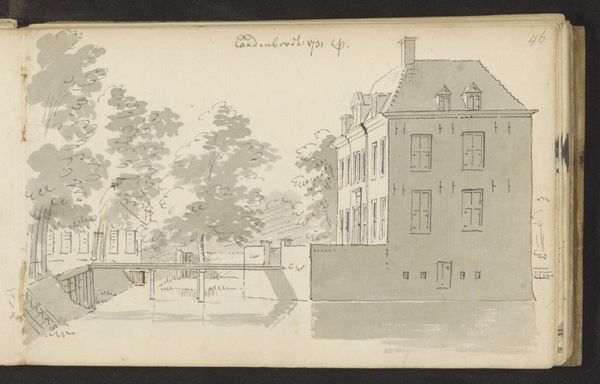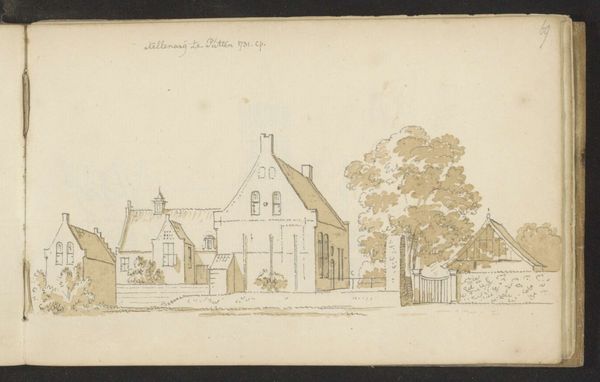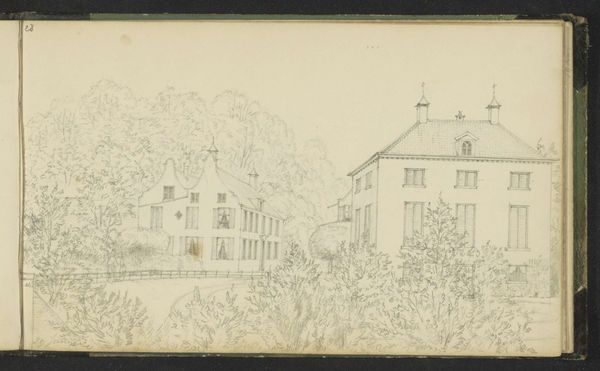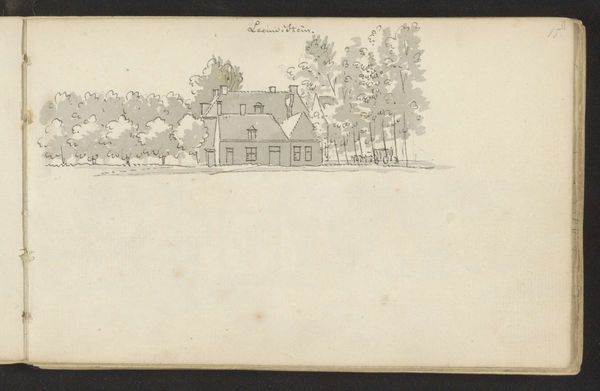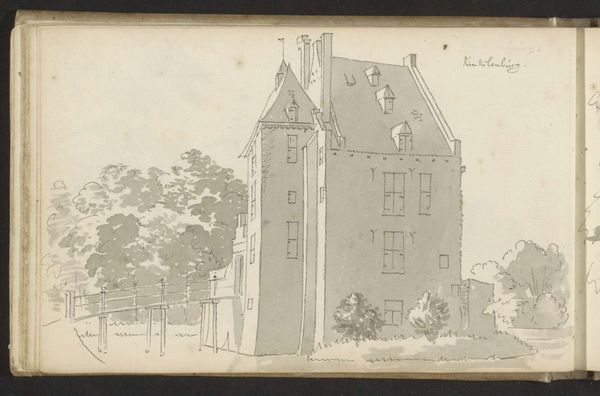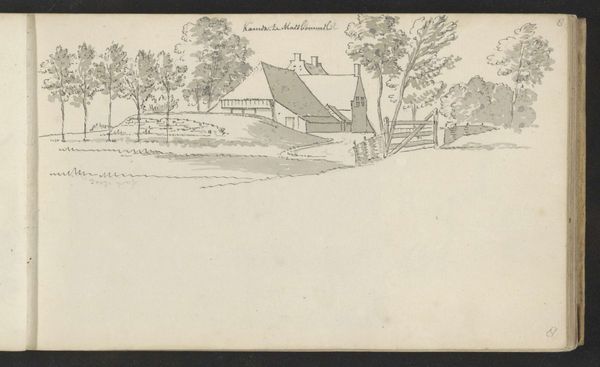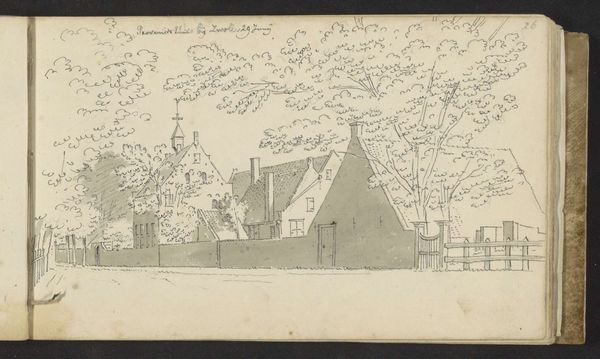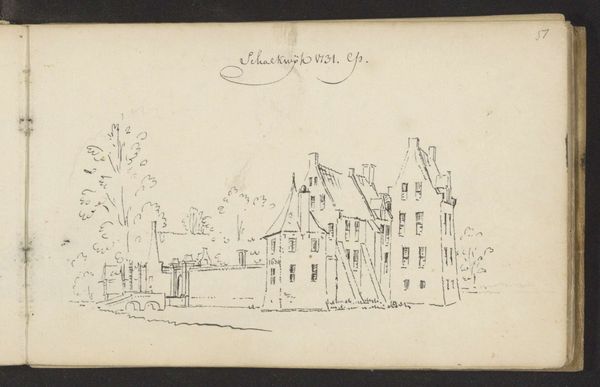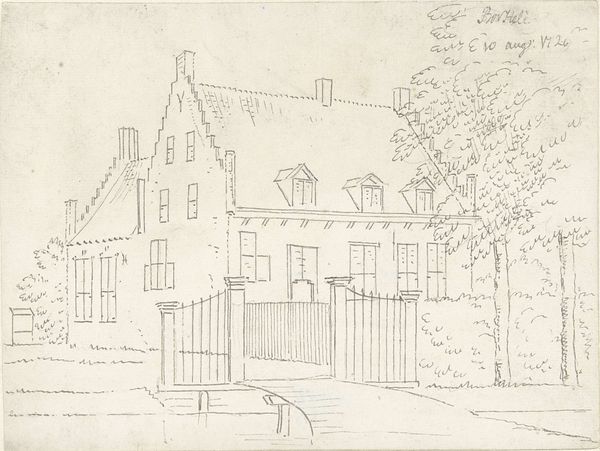
drawing, ink, pen
#
drawing
#
dutch-golden-age
#
pen sketch
#
landscape
#
ink
#
pen
#
genre-painting
Copyright: Rijks Museum: Open Domain
Abraham de Haen II sketched this image of Boerderij Tarthorst te Wageningen with pen in gray ink on paper. The essence of ‘home’ resonates deeply within us, doesn't it? Note how the image is anchored by the simple geometric forms of the house, repeated in the outbuildings and the well. The composition’s focus on the square recalls the Roman “castrum,” the architectural layout for military forts, which became the foundation for city planning and domestic architecture. In ancient Pompeii, for example, the layout of homes echoed this structured, protective design, emphasizing a sense of order and security. Over time, this primal architectural form has manifested in various ways across cultures, symbolizing safety, stability, and community. De Haen’s image taps into this collective memory, engaging viewers on a subconscious level with the deep-seated human desire for shelter and belonging. This is an instance of the powerful cultural memory embedded in this modest farmhouse.
Comments
No comments
Be the first to comment and join the conversation on the ultimate creative platform.
